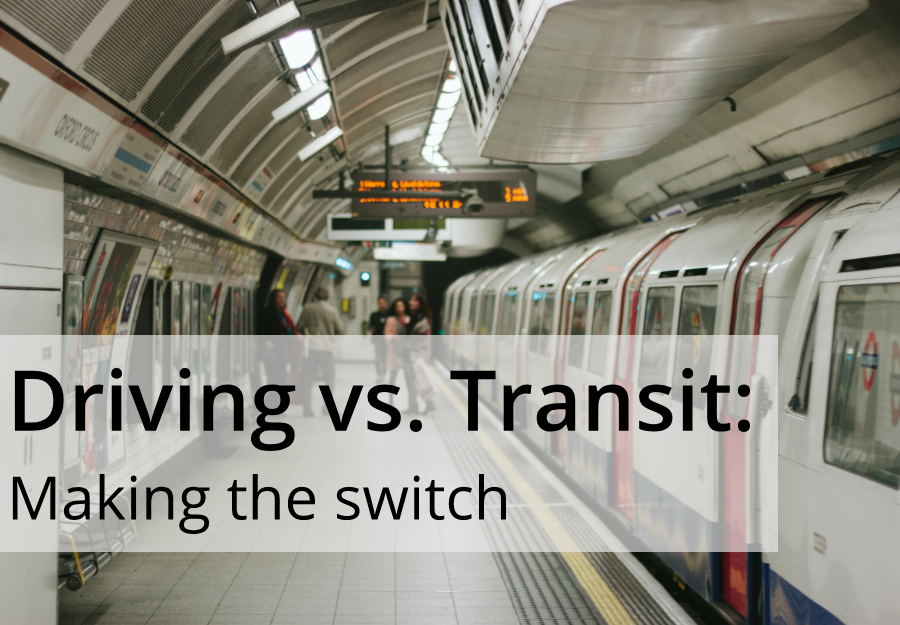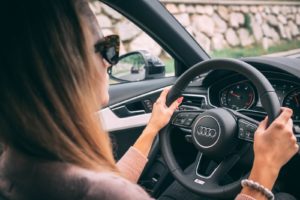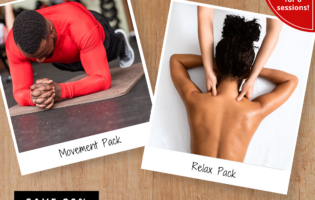Total Therapy Blog

Driving vs. Transit: Making the switch
This article was written by our Kinesiologist, Katrina Kwai.
Growing up playing multiple sports peaked my interest in health sciences at a young age. Upon completing my bachelors in Kinesiology and spending a year volunteering in Cardiac Rehabilitation, my passion towards helping others has increased. I love motivating and guiding clients towards a healthier and more physically active lifestyle.
Driving vs Transit: Making the switch
I did it. I uninsured my vehicle and am now a full-time transit rider. Since switching to transit, I have noticed positive changes, as well as some setbacks. Even though there have been setbacks, I can say that they do not outweigh the benefits of transiting.
Steps Steps Steps
 I believe this is one of the most obvious. No more walking to a vehicle, parked conveniently close. Now I must walk (or run when need be!) those extra steps to the nearest bus stop and wait. Though that may be inconvenient to some, I maximize this time to breathe in the fresh air, especially after being in the clinic all day. Patience and time-management are important virtues and skills to have when travelling via transit.
I believe this is one of the most obvious. No more walking to a vehicle, parked conveniently close. Now I must walk (or run when need be!) those extra steps to the nearest bus stop and wait. Though that may be inconvenient to some, I maximize this time to breathe in the fresh air, especially after being in the clinic all day. Patience and time-management are important virtues and skills to have when travelling via transit.
Increasing my daily steps is one of the main reasons I uninsured my car. Actually, my number one reason was to save some $$$ by uninsuring – not paying for gas and any maintenance and repairs. As wonderful as it is to save money, the extra steps to my day provide me greater happiness. As cheesy as that sounds, it’s true. I walk far more than I used to.
Ahh, for example…when it comes to grocery shopping, I have to be ergonomically smart about it. I took my trusty backpack with me (shucks, so many people think I am a student!) and a few reusable grocery bags. Now I am able to put heavier items into my backpack, making it easier to carry those from the grocery, to the bus stop, and finally home. With the added steps, it became a teensy bit more challenging (burn more calories!) as I am weighed down by groceries.
Downside of no vehicle

- Not being able to get up and go somewhere freely. It now takes time to plan and manage my day around transit times.
- …I tried to think of a second one, but couldn’t. I do believe there are other downsides to not owning a vehicle, but everyone has their own reasons. I believe the area I live in and where I work has allowed me to reap in all the benefits of transit, and so far I do not miss my vehicle. I know that if there is a worst-case scenario, I am fortunate to be able to use the car-shares that are readily available in my area.
I challenge you… to increase your daily step count. Take the stairs! If you work in a high-rise and you could not fathom walking up 30 floors, take the elevator part way up and walk a few staircases the rest of the way up. Or park your car on the other end of the parking lot at the grocery store. For those who work a desk job, consider how much you sit all day. Not only will increasing your walking loosen up those tightened hip flexors (from sitting all day), increased walking will play a role in reduced fat mass, improve lumbar function and reduce low back pain (Lee & Kang, 2016).
References:
Lee, J., & Kang, S. (2016, October 31). The effects of strength exercise and walking on lumbar function, pain level, and body composition in chronic back pain patients. Retrieved from https://www.ncbi.nlm.nih.gov/pmc/articles/PMC5091063/








Follow Us!
& Stay Up To Date
BLOG